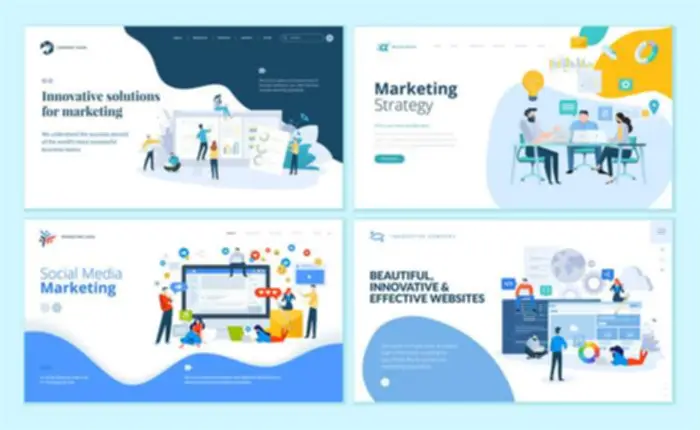It offers extra control than other alternate options, similar to PaaS, so the developer is liable for everything related to maintaining the infrastructure, even scaling their applications based mostly on their needs. This mannequin primarily outsources the infrastructure part of IT management to cloud service suppliers. This cloud computing mannequin gives organizations entry to IT infrastructure with out having to put cash into bodily hardware and devoted space to run the equipment. PaaS customers additionally acquire entry to varied sources within the https://www.globalcloudteam.com/ application stack similar to middleware, programming languages, working systems, and databases.
Understanding Saas, Paas, And Iaas
PaaS delivers a framework that builders can build upon and use to create personalized applications. All servers, storage, and networking may be saas vs paas examples managed by the enterprise or a third-party provider while the developers can preserve management of the functions. In the SaaS mannequin, the software applications are centrally hosted and maintained by a cloud service supplier. Users can usually entry the purposes on a subscription basis, paying for the software program usage as a service.
- PaaS delivery is somewhat much like SaaS delivery, besides as an alternative of software being delivered across the web, PaaS provides a software creation platform via the net.
- Because SaaS is delivered through the online, there’s no need to obtain and set up the application on every employee’s laptop.
- IaaS prospects use the hardware via an internet connection, and pay for that use on a subscription or pay-as-you-go foundation.
- The upgrade from G Suite got here as a result of a more built-in expertise across Google’s broader suite, which allowed its prospects to better join with their numerous instruments.
Practical Testing: Ensuring Software Does What It Should
SaaS providers also provide out-of-the-box, simple options to arrange if you want a basic package deal, with extra advanced solutions for larger organizations. You could have the basic software program up and working inside a matter of hours – and you’ll have entry to customer support and support along the way in which. Cloud-based providers have reworked how companies have labored, permitting them to use IT infrastructures, platforms, software program and purposes by way of the Internet and online hotspots. Red Hat’s cloud infrastructure products embrace Red Hat OpenStack® Platform, Red Hat Satellite, Red Hat Ceph Storage, and our container orchestration platform Red Hat OpenShift. Red Hat OpenShift can be accessed as a cloud service with main cloud providers, or you can self-manage Red Hat OpenShift your self for max flexibility and customization.
What Are The Variations Between Iaas, Paas And Saas?
As an skilled software growth company, we study the three in style Cloud Computing services, their features, and differences. Choosing between IaaS vs PaaS vs SaaS includes contemplating technical capabilities, control, customization wants, price range, and how a lot the group wants to handle in-house versus outsourcing. By leveraging the best cloud service model, organizations can optimize operations, reduce costs, and scale effectively, all whereas focusing on their core competencies. A significant advantage of PaaS is that the need to reinvent the wheel is eliminated.
Optimize Useful Resource Utilization And Prices:
Zero-day vulnerabilities are safety flaws in software that attackers exploit before a patch is released, significantly in SaaS environments. These vulnerabilities can result in unauthorized entry, information breaches, or service disruptions, necessitating well timed patching and proactive safety measures to mitigate these dangers. Understanding and testing interactions across the business circulate helps assure application safety. Organizations could forestall data breaches, unauthorized entry, and different safety issues brought on by poor interaction mapping and testing by detecting and resolving attainable weaknesses in communication paths.
An Introduction To Distributed Clouds
PaaS offers a cloud-based platform for growing, working, managing functions. IaaS entails virtualized computing sources over the web, with customers liable for securing the operating system, purposes, knowledge, and networks. Security issues embrace information safety, community security, identity and access administration, and bodily security. PaaS suppliers handle the underlying infrastructure and runtime setting, whereas customers focus on growing and deploying functions.
PaaS choices sometimes embody improvement instruments, middleware, databases and working methods that are required to support the entire software lifecycle. With PaaS, developers can concentrate on building and deploying applications without worrying about infrastructure management. Popular examples of PaaS include Heroku, Microsoft Azure App Service, Google App Engine and AWS Elastic Beanstalk. It permits organizations to purchase assets like networking and storage on-demand instead of having to purchase costly hardware.
Companies can leverage the APIs, to shortly assemble a set of third-party solutions. The improvement staff can pay a month-to-month payment and use sources to build and deploy purposes faster than constructing from scratch. Startups and innovation teams can leverage PaaS to shortly build and deploy minimum viable products (MVPs) with out the overhead of managing complex infrastructure. The pre-configured environments and built-in improvement instruments enable builders to focus on core performance, decreasing the time from concept to a working prototype.
Learn all about IaaS vs PaaS vs SaaS and the way they assist create a cloud-computing surroundings that’s tailored to your wants. We’ll also take a glance at some examples, so you know the way as-a-service choices combine into your current IT landscape and what benefits and disadvantages to count on. Red Hat OpenShift on IBM Cloud offers developers a quick and safe method to containerize and deploy enterprise workloads in Kubernetes clusters.
Another key distinction is that SaaS is delivered on a subscription basis, while IaaS, PaaS and DaaS are all offered on a pay-as-you-go basis. These services can boost productivity and effectivity at your organization — and allow you to develop higher consequently. Red River excels in providing managed companies tailor-made particularly for “as-a-service” applications, including SaaS, PaaS, IaaS and DaaS solutions. With a deep understanding of the complexities and nuances of cloud computing, the Red River staff provides complete support to ensure seamless integration, optimization and management of these purposes. Infrastructure-as-a-service consists of scalable cloud infrastructure services offering pay-as-you-go networking, virtualization, and storage.
Offload tedious and repetitive tasks involving safety administration, compliance management, deployment management and ongoing lifecycle management. Application programming interfaces, or APIs, simplify software growth and innovation by enabling applications to change knowledge and functionality easily and securely. Anytime you’re not sure of a brand new application’s demands, IaaS provides plenty of flexibility and scalability.
It’s much like the distinction between hiring a venue to put on a show vs. building one yourself to put on a present. With the elevated reputation of cloud computing and services, businesses across the globe are transferring away from the traditional on-premise providers that they’ve come to rely on. PaaS is a method that developers can create a framework to construct and customize their web-based functions on. Developers can use built-in software elements to create their functions, which cuts down on the quantity of code they have to write themselves.
Here’s a SaaS vs. PaaS vs. IaaS guide that can help you perceive the variations between these rising cloud companies. CPaaS options give builders software programming interfaces (APIs) and software program improvement kits (SDKs) to embed these communication options instantly into applications and workflows. It permits users to hire IT infrastructures, such as servers, working systems, network technology, storage, and knowledge center house.



















